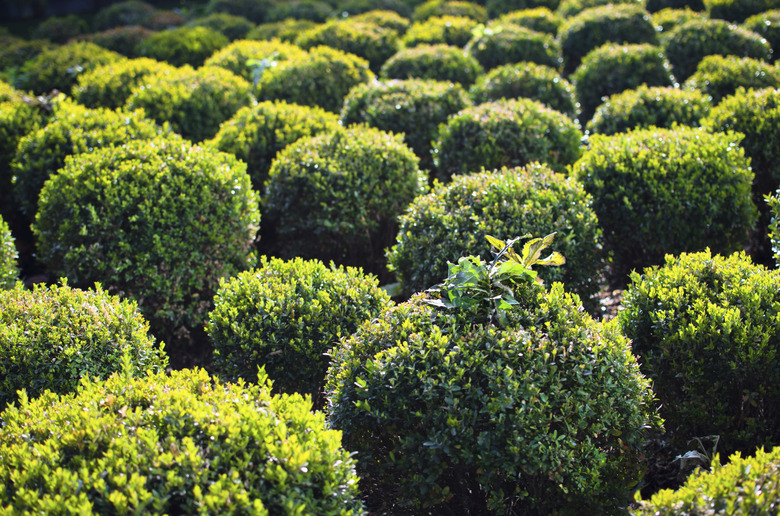How Tall Do Boxwood Shrubs Grow?
Evergreen and hardy with attractive foliage, boxwoods (Buxus spp.) make excellent specimen plants or shrubs. In fact, boxwoods have been used as garden plants for about 4,000 years. Although there are over 90 species of boxwood, just three of them — and their hybrids — make up the majority of boxwoods used in landscapes in the United States today. The tallest can grow to heights of around 20 feet.
Tallest Boxwoods
Tallest Boxwoods
Boxwoods vary in height quite widely, depending on the species and cultivar. The tallest are cultivars of the common or American boxwood (Buxus sempervirens). This is by far the most common boxwood and it's also the species with the most cultivars — around 400. Hardy in U.S. Department of Agriculture plant hardiness zones 5 through 8 — again depending on the cultivar — mature common boxwood plants can reach a maximum average height of around 20 feet. More commonly, however, they grow to a height of between 10 and 15 feet.
Shortest Boxwoods
Shortest Boxwoods
The shortest boxwoods are usually dwarf cultivars. The very shortest is a variety of the Japanese boxwood (Buxus microphylla) called "Compacta." It reaches an average maximum height of only about 12 inches, and it is commonly cultivated as a bonsai plant. Japanese boxwood plants — also called littleleaf boxwoods — are hardy in USDA zones 5 through 9, but this varies by cultivar. "Compacta" is hardy in USDA zones 6 through 9.
Growth Rate
Growth Rate
Often, the shortest varieties remain small in part due to their slow growth rate. In fact, "Compacta" has an extremely slow growth rate and may take 15 years to reach a height of about 10 inches. On the other hand, taller varieties grow more quickly. Most grow, on average, between 3 and 6 inches per year, but Buxus sempervirens "Highlander" grows at an astonishing rate of 24 inches per year. It is hardy in USDA zones 5 through 9.
Growth Conditions
Growth Conditions
As with any plant, boxwoods grow best and reach their maximum heights only when they are cared for properly. They grow best in partial shade, with protection from hot afternoon sun and strong winds. Most importantly, boxwoods need moist but well-drained soil, as "wet feet" can lead to a host of problems.
